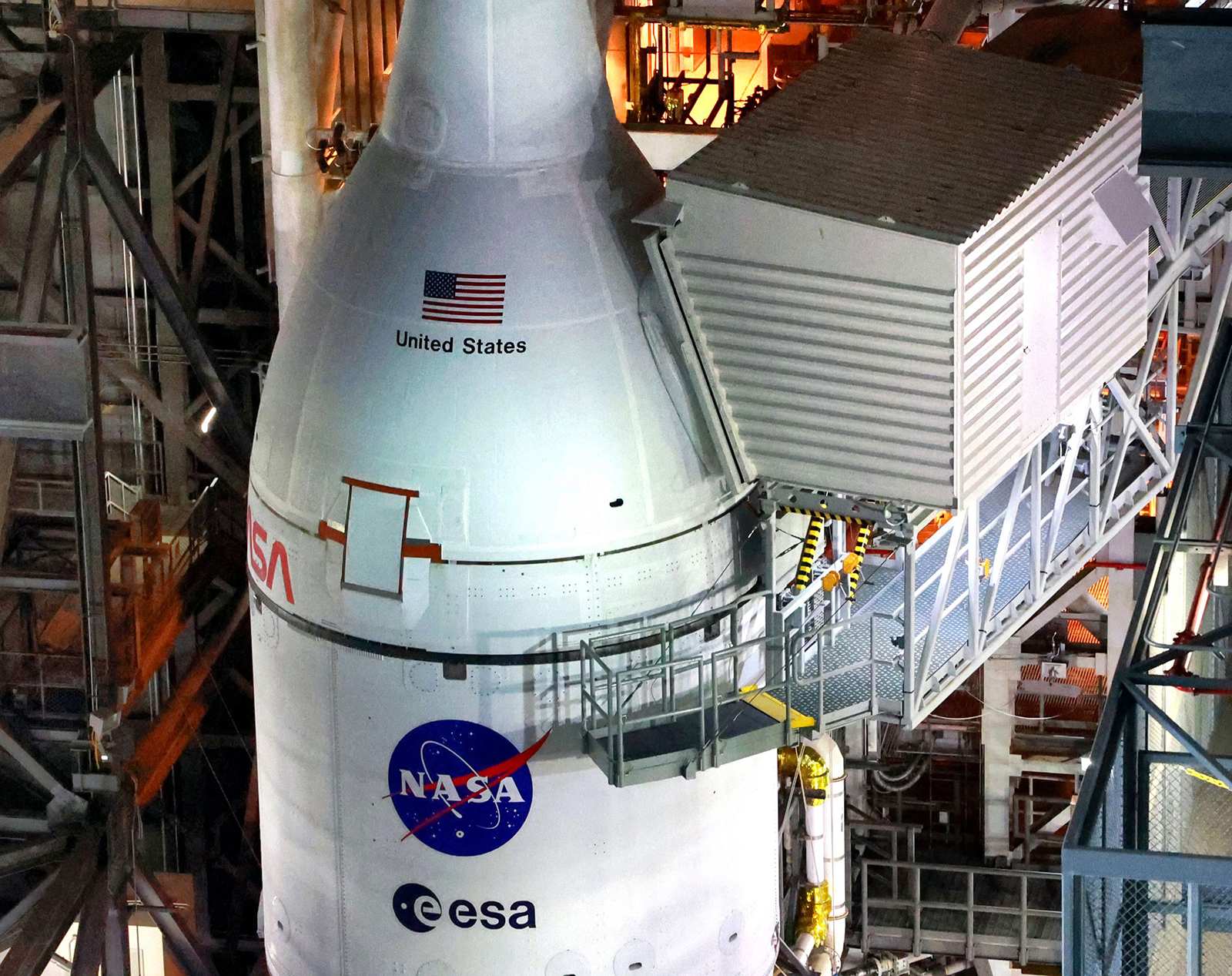
With a week to go before the Artemis I rocket has its first shot at the moon, NASA managers said the hardware is good to go.
The massive Space Launch System rocket and Orion spacecraft atop the mobile launcher rolled out to Kennedy Space Center’s Launch Pad 39-B last week ahead of the first launch window that opens at 8:33 a.m. Monday.
“We are go for launch,” said NASA Associate Administrator Bob Cabana after teams completed the flight readiness review Monday. “This day has been a long time coming. … I want to put this in perspective. This is a test flight. It’s not without risk. We have analyzed the risk as best we can and we have mitigated as best we can.”
The rocket launch expected to bring between 100,000 and 200,000 spectators to the Space Coast will if successful become the most powerful rocket to ever lift off from Earth. The core stage combined with two solid rocket boosters produce 8.8 million pounds of thrust besting the Saturn V rockets from the Apollo missions to the moon.
Artemis I is the first of a series of missions that look to return humans to the lunar surface for the first time since Apollo 17 in 1972. The uncrewed flight will sling Orion off on a planned 42-day mission that will travel more than 1.3 million miles orbiting the moon multiple times before returning to Earth in October for a splashdown in the Pacific Ocean.
The path will take Orion to 280,000 miles away from Earth, 40,000 miles beyond the moon, making it the farthest any human-rated spacecraft has ever traveled. Its return flight will see Orion setting speed records as well, hitting 24,500 mph during re-entry that will generate temperatures near 5,000 degree Fahrenheit.
“We’re going to learn a lot from this test flight,” Cabana said. “There are certain cases that could come up that could cause us to come home early, and that’s OK. We have contingencies in place and the main objective that we really want to get out of this test flight, of course, is that stressing that heat shield getting a test of that new Orion heat shield at lunar re-entry velocities.”
If it can’t hit the two-hour launch window Monday, backup opportunities are available on Friday, Sept. 2 and the following Monday, Labor Day, Sept. 5.
The primary goal of the flight is to make sure Orion can support human passengers in preparation for Artemis II, which will take humans back to the moon, but only to orbit, as early as May 2024.
The only passengers on this Orion are three mannequins that will help measure among other things the radiation that humans might endure as the the spacecraft ventures beyond the protection of the Van Allen belts, and could be subject to solar flares and cosmic rays.
Artemis III then looks to return humans to the surface no earlier than 2025. That mission can’t occur until SpaceX develops a lunar landing version of its in-development Starship.
Its target destination is the moon’s south pole. NASA last week announced 13 potential landing zones that are close enough to the dark craters that never seen sunlight on the pole that could hold water ice, which could potentially be converted into both air to breathe and fuel, and pave the way for future expansion to Mars.
The Artemis program was born out of the remains of the canceled Constellation program from the 2000s that included the Orion capsule. The new program announced in 2012 was supposed to have seen its first launch by 2016, but has faced myriad delays and ballooning costs.
Originally projected around $500 million per flight, costs are now expected to surpass $4.1 billion per flight through the first four missions, according to NASA’s Office of the Inspector General.
After Artemis III, NASA looks to continue missions with at least one a year through the end of the decade and beyond, with a stated goal of having humans walk on Mars by 2040.
“We have worked really hard to get here,” Cabana said. “The team has done an absolutely outstanding job and as difficult as it is, we’re up to the challenge. I’m really looking forward to a successful test flight.”
___
© 2022 Orlando Sentinel Distributed by Tribune Content Agency, LLC